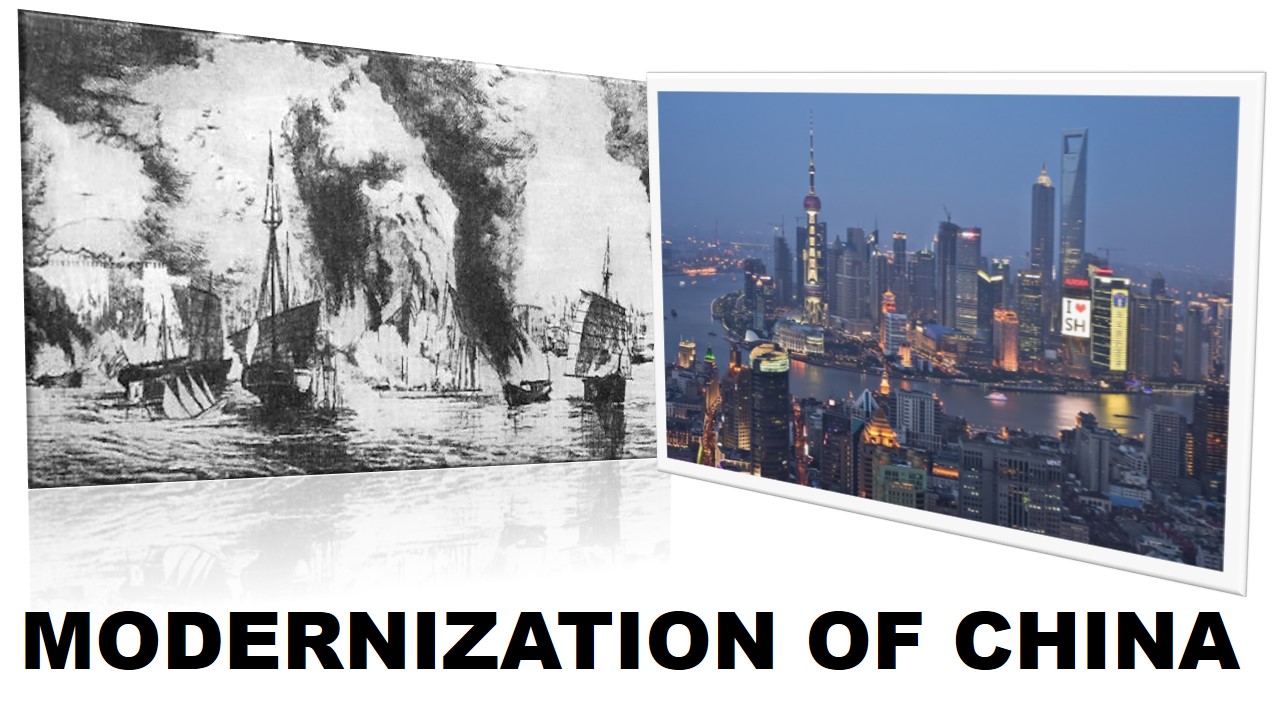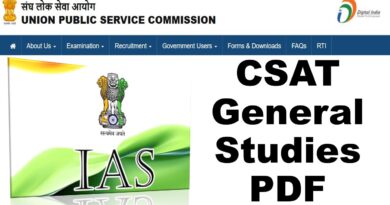MODERNIZATION OF CHINA
When we try to understand the modern history of the three, we see how the modern history of China has revolved around the question of the end of the humiliation of foreign occupations that merited sovereignty and the intercourse of equality and development. Three groups of attitudes spill over into Chinese buses. Early reforms such as the Kang Ye Well 1858 to 1927 or the Liang stretch 1873 to 19 tried to use traditional ideas in new and different ways to meet the challenges of the West First National Gyan Sen of the Second Republic was influenced by the ideas of Gun Tantric Revolutionaries from Japan and the West. Third, the Communist Party of China wanted to eliminate Yugo Yugo’s inequalities and drive out foreigners.
जब हम तीनों की आधुनिक इतिहास को समझने का प्रयास करते हैं तब हम यह देखते हैं कि किस प्रकार से चीन का आधुनिक इतिहास संप्रभुता की पुण्य प्राप्त विदेशी कब्जों के अपमान का अंत और समानता तथा विकास के संभोग करने के सवालों के चारों ओर घूमता दिखता है चीनी बसों में तीन समूहों के नजरिए छलकते हैं कांग यह वेल अट्ठारह सौ 58 से 1927 या लियांग खिंचाव अट्ठारह सौ 73 से 19 जैसे आरंभिक सुधारों ने पश्चिम की चुनौतियों का सामना करने के लिए पारंपरिक विचारों को नए और अलग तरीके से इस्तेमाल करने की कोशिश की दूसरे गणतंत्र के पहले राष्ट्रीय ज्ञान सेन जैसे गन तांत्रिक क्रांतिकारी जापान और पश्चिम के विचारों से प्रभावित थे तीसरे चीन की कम्युनिस्ट पार्टी युगो युगो की असमानता ओं को खत्म करना और विदेशियों को खदेड़ना चाहती थी
Contents
- 1 The Beginning Of Modern China
- 1.1 What is the opium trade?
- 1.2 Confucian ideology
- 1.3 Chinese Education System
- 1.4 The arrival of a new education system in China
- 1.5 🇨🇳 Modernization of China – A Complete Overview
- 1.6 Definition:
- 1.7 Historical Background:
- 1.8 Key Phases in China’s Modernization:
- 1.9 1. Mao Zedong Era (1949–1976)
- 1.10 2. Deng Xiaoping Reforms (1978 onwards)
- 1.11 3. Rapid Economic Growth (1990s–2010s)
- 1.12 Modern-Day China (Post-2025)
- 1.13 Challenges in Modernization
- 1.14 Achievements of China’s Modernization
- 1.15 Conclusion:
- 1.16 The Chinese Path to Modernization and Its Implications for …
- 1.17 MODERNIZATION OF CHINA
- 1.18 China’s Quest for Modernization
The Beginning Of Modern China
The beginning of modern China can be traced back to the first concordance with the West in the 16th and 17th centuries, while the Jai Sweet missionaries brought Western sciences such as astronomy and mathematics to the region. Di, which gained momentum in the 19th century when Britain used military forces to increase the profitable trade of opium, which led to the First Opium War from 1840 to 1942 AD, in which the ruling Qing dynasty was weakened and reforms and changes were made. Qing reformers such as Kang Yuwei and Liang Vibe felt the need to strengthen the situation and made policies for the creation of a modern administrative system, breakfast and education system. They also formed local legislators to establish a fellow constitutional government. China’s strength to avoid colonization.

आधुनिक चीन की शुरुआत 16वीं और 17वीं सदी के सदी में पश्चिम के साथ पहला सामत समय से मानी जा सकती है जबकि जय स्वीट मिशनरियों ने खगोल विद्या और गणित जैसे पश्चिमी विज्ञानों को वहां पहुंचाया इसका तात्कालिक असर तो सीमित था पर इसने उन चीजों की शुरुआत कर दी जिन्होंने 19वीं सदी में जाकर तेज गति पकड़ी जब ब्रिटेन ने अफीम के फायदे मंद व्यापार को बढ़ाने के लिए सैन्य बलों का इस्तेमाल किया इसी के चलते पहला अफीम युद्ध 1840 से 1942 इसवी तक हुआ इसमें सत्ताधारी क्विंग राजवंश को कमजोर किया और सुधार तथा बदलाव की मांगों को मजबूती दी कांग यूवेई और लियांग खिंचाव जैसे क्विंग सुधारकों ने अवस्था को सुदृढ़ बनाने की जरूरत महसूस की और एक आधुनिक प्रशासकीय व्यवस्था नाश्ता और शिक्षा व्यवस्था के निर्माण के लिए नीतियां बनाई साथी संवैधानिक सरकार की स्थापना के लिए स्थानीय विधायकों का भी गठन किया उन्होंने चीन को उपनिवेशीकरण से बचने की मजबूती और जरूरी भी महसूस की थी
What is the opium trade? |
| The demand for Chinese products such as tea, silk and Chinese pottery created a huge problem of trade imbalance. Western products did not find a market in China, due to them the payment had to be made in silver. The East India Company found an alternative opium. By selling opium in China, they earned silver and gave it to the company’s representatives in exchange for letters of credit in the canteen, thus the company used that silver to buy tea, silk and porcelain utensils for Britain. It was a triangular trade in products between Britain, India and China.
चीनी उत्पादों जैसे चाय रेशम और चीनी मिट्टी के बर्तनों की मांगने व्यापार में असंतुलन की भारी समस्या खड़ी कर दी पश्चिमी उत्पादों को चीन में बाजार नहीं मिला उनकी वजह से भुगतान चांदी में करना पड़ता था ईस्ट इंडिया कंपनी ने एक विकल्प ढूंढा अफीम यह हिंदुस्तान के कई हिस्सों में बहुत आराम से उठती थी चीन में अफीम बेचने के जरिए वे चांदी कमाकर कैंटीन में उधार पत्रों के बदले कंपनी के प्रतिनिधियों को देने लगे इस तरह कंपनी उस चांदी का इस्तेमाल ब्रिटेन के लिए चाय रेशम और चीनी मिट्टी के बर्तन खरीदने के लिए करती थी ब्रिटेन भारत और चीन के बीच यह उत्पादों का त्रिकोणीय व्यापार था |
Negative examples of colonized countries had a tremendous impact on Chinese thought. The most well-known example was the partition of Poland in the 18th century. Even in the eighteenth and nineties, the word Poland began to be used as a verb. The example of India was also in front of us to Poland. The thinker Liang Vibe believed that only by raising the awareness of one nation among the Chinese people, China would be able to oppose the West. In 1809 he wrote that India is a country that is not any other country but Ruined at the hands of a company He criticized Indians for claiming Britannia and being cruel to his people. His arguments attracted the common man because China saw Britannia as Indians at war with China. uses soldiers.
उपनिवेश बनाए गए देशों के नकारात्मक उदाहरणों ने चीनी विचार को पर जबरदस्त प्रभाव डाला 18 वीं सदी में पोलैंड का बंटवारा सर्वाधिक बहुचर्चित उदाहरण था यहां तक कि अट्ठारह सौ नब्बे के दशक में पोलैंड शब्द का इस्तेमाल क्रिया के रूप में किया जाने लगा बोला वह का मतलब था हमें पोलैंड करने के लिए भारत का उदाहरण भी सामने था विचारक लियांग खिंचाव का मानना था कि चीनी लोगों में एक राष्ट्र की जागरूकता लगाकर ही चीन पश्चिम का विरोध कर पाएगा 1809 में उन्होंने लिखा कि भारत एक ऐसा देश है जो किसी और देश नहीं बल्कि एक कंपनी के हाथों बर्बाद हो गया ईस्ट इंडिया कंपनी के वह ब्रिटानिया की दावेदारी करने और अपने लोगों के साथ क्रूर होने के हिंदुस्तानियों की आलोचना करते थे उनके तर्कों ने आम आदमी को खासा आकर्षित किया क्योंकि चीन देखते थे कि ब्रिटानिया चीन के साथ युद्ध में भारतीय जवानों का इस्तेमाल करता है
Confucian ideology
Most of the channel felt that there was a need to change the traditional thinking. Confucius had been the dominant ideology in China. This ideology was developed under the direction of Confucius from 551 to 479 BC and his followers and in education, its scope was good practice, practical understanding and was of the principles of proper social relations
सबसे अधिक चैनल को यह महसूस हुआ की परंपरागत सोच को बदलने की जरूरत है Confucius चीन में प्रमुख विचारधारा रही थी यह विचारधारा कन्फ्यूशियस 551 से 479 ईसवी पूर्व और उनके अनुयायियों की दिशा में और शिक्षा में विकसित की गई थी इसका दायरा अच्छे व्यवहार व्यवहारिक समझदारी और उचित सामाजिक संबंधों के सिद्धांतों का था
Chinese Education System
To train people in new subjects, students were sent to Japan to study in Britain and France so that they came back after learning new ideas. In the 18 to 90s, a large number of Chinese students to study not only brought back new ideas to Japan Rather, they played a pivotal role in the establishment of the republic, because Chinese and Japanese use the same hieroglyphs. This was a reversal of the traditional ties of China’s Japanese translation of European ideas of justice and revolution from Japan. The Russo-Japanese War of 19 to 5 AD A war that was fought for dominance over Chinese land and Chinese territory, followed by the abolition of the centuries-old Chinese examination system that served to admit candidates into the elite ruling class.
लोगों को नए विषयों में प्रशिक्षित करने के लिए विद्यार्थियों को जापान ब्रिटेन और फ्रांस में पढ़ने भेजा गया ताकि वे नए विचार सीख कर वापस आए 18 से 90 के दशक में बड़ी तादाद में चीनी विद्यार्थी पढ़ने के लिए जापान के वह न केवल नए विचार वापस लेकर आए बल्कि गणतंत्रता की स्थापना करने में उन्होंने अग्नि भूमिका निभाई है क्योंकि चीनी और जापानी भाषा एक ही चित्र लिपि का इस्तेमाल करती है चीन ने जापान से न्याय अधिकार और क्रांति के यूरोपीय विचारों के जापानी अनुवाद की यह एक तरह के पारंपरिक संबंधों का उलट जाना था 19 से 5 ईसवी में रूसी जापानी युद्ध एक ऐसा युद्ध जो चीन की जमीन पर और चीनी इलाके पर प्रभुत्व के लिए लड़ा गया था इसके बाद सदियों पुरानी चीनी परीक्षा प्रणाली समाप्त कर दी गई जो प्रत्याशी तों को अभिजात सत्ताधारी वर्ग में दाखिल दिलाने का काम करते थे
The arrival of a new education system in China
The entry into the elite ruling class was from 18 to 50, about 1 eleven lakh was mostly through examinations, in which an 8-part essay was to be written in the prescribed form in Pakur Vin Shastri Chinese, mainly the examination was conducted twice every 3 years at different levels. In the first level examination, only 1 2% of the people got 500 by the age of 24 and became a beautiful talent, in this degree they got admission in the elite class, in 18 to 50 AD and before any At the time 526869 Civil and 212303 Sand Provincial Sang Huang degree people were present in the whole country, only 27000 had done the state in the country, so many lower level degree holders did not have jobs because the examination acted as a hindrance in the development of science and technology. It demanded only literary skill because it was based on the skill of learning classic Chinese that no one in the modern world has.
अभिजात सत्ताधारी वर्ग में प्रवेश 18 से 50 तक लगभग 1 ग्यारह लाख ज्यादातर इम्तिहान के जरिए ही होता था इसमें 8 भाग वाला निबंध निर्धारित प्रपत्र में पाकुर विन शास्त्री चीनी में लिखना होता था मुख्य रूप से परीक्षा विभिन्न स्तरों पर हर 3 साल में दो बार आयोजित की जाती थी पहले स्तर की परीक्षा में केवल 1 2% लोग 24 साल की उम्र तक 500 पाते थे और भी सुंदर प्रतिभा बन जाते थे इस डिग्री में उन्हें निकले कुलीन वर्ग में प्रवेश मिल जाता था 18 से 50 ईसवी में और इससे पहले किसी भी समय 526869 सिविल और 212303 सेंड प्रांतीय संग हुआंग डिग्री वाले लोग पूरे देश में मौजूद थे देश में केवल 27000 राज्य किए थे इसलिए कई निचले दर्जे के डिग्री धारियों के पास नौकरी नहीं होती थी इम्तिहान विज्ञान और प्रौद्योगिकी के विकास में बाधक का काम करता था क्योंकि इसमें सिर्फ साहित्यिक कौशल की मांग होती थी क्योंकि यह क्लासिक चीनी सीखने के हुनर पर आधारित था जिसकी आधुनिक विश्व में कोई प्रासंगिकता नजर नहीं आती थी
Here’s a clear and concise summary on the Modernization of China, suitable for school, college, or competitive exam study:
🇨🇳 Modernization of China – A Complete Overview
Definition:
Modernization of China refers to the transformation of China from a traditional, agrarian society into a modern industrial and technological power, especially from the late 20th century onwards.
Historical Background:
Before modernization, China:
-
Was largely rural and agrarian
-
Suffered from foreign invasions, internal strife (Opium Wars, Civil War)
-
Experienced poverty and lack of infrastructure
Key Phases in China’s Modernization:
1. Mao Zedong Era (1949–1976)
-
Foundation of the People’s Republic of China (1949)
-
Great Leap Forward (1958–1961):
Attempt to rapidly industrialize—resulted in massive famine -
Cultural Revolution (1966–1976):
Political and social chaos; education and economy suffered
2. Deng Xiaoping Reforms (1978 onwards)
Known as the Father of Modern China
Four Modernizations (1978):
-
Agriculture
-
Industry
-
Science and Technology
-
Defense
Key Features:
-
Open Door Policy – welcomed foreign trade and investment
-
Special Economic Zones (SEZs) – like Shenzhen
-
Shifted from planned economy → socialist market economy
3. Rapid Economic Growth (1990s–2010s)
-
Became the “World’s Factory”
-
Massive urbanization and infrastructure projects (e.g., high-speed rail)
-
Entry into World Trade Organization (WTO) in 2001
Modern-Day China (Post-2025)
-
Focus on technology and innovation (e.g., Huawei, AI, 5G)
-
“Made in China 2025” – plan to upgrade manufacturing
-
Investments in education, science, digital economy
-
Global influence through Belt and Road Initiative (BRI)
-
Ambition to become carbon-neutral by 2060
Challenges in Modernization
-
Income inequality (rural vs. urban)
-
Environmental degradation
-
Political restrictions & censorship
-
Aging population
Achievements of China’s Modernization
-
Lifted 800+ million people out of poverty
-
World’s 2nd largest economy
-
Advanced in space, defense, and digital tech
-
Better healthcare, education, and infrastructure
Conclusion:
The modernization of China is one of the most remarkable transformations in world history. From isolation and poverty to global economic and technological leadership, China’s journey reflects the complex interplay between policy reform, innovation, and long-term vision.
Would you like this as a printable PDF, timeline chart, or presentation slide? I can make it super easy to revise or share.



